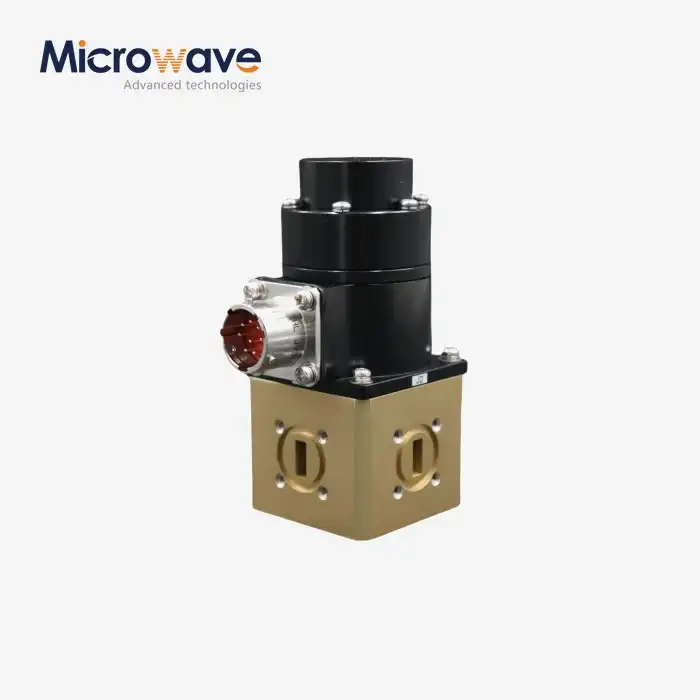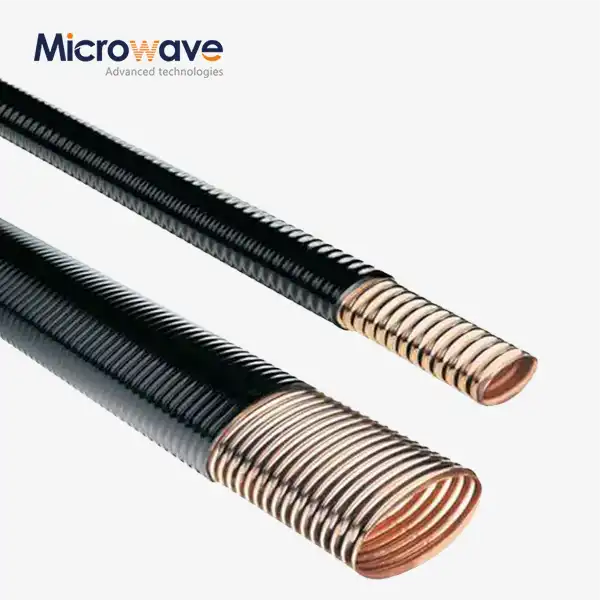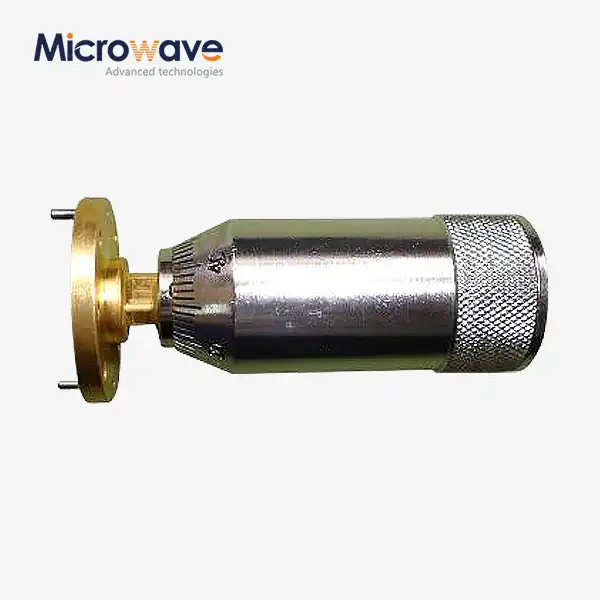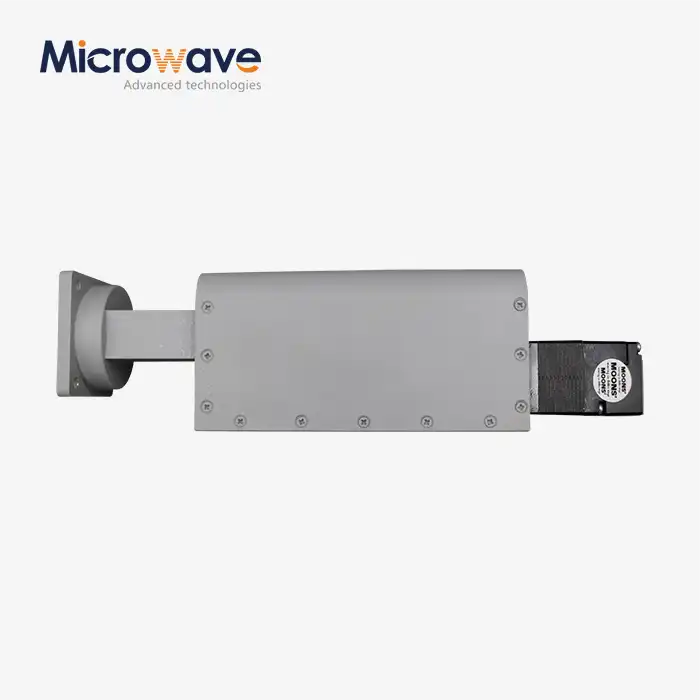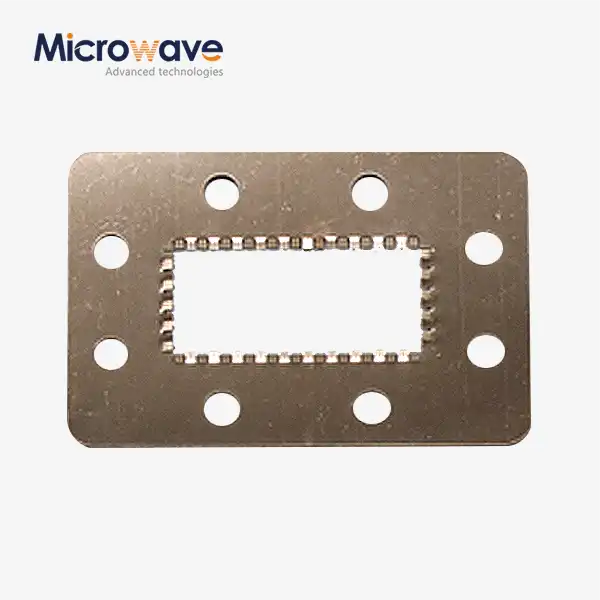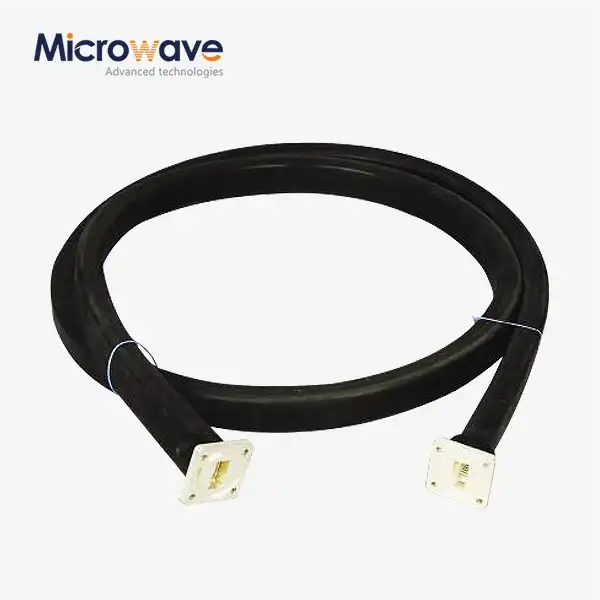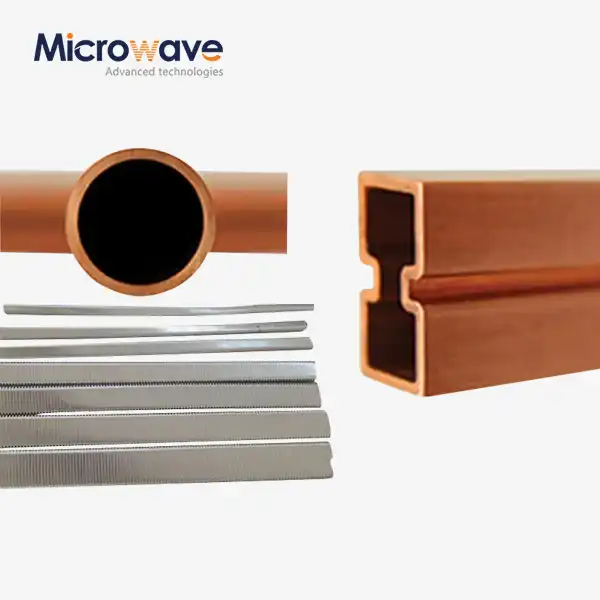What Materials Are Commonly Used in the Manufacturing of Waveguide Tubes?
The selection of appropriate materials in waveguide tube manufacturing is critical for ensuring optimal microwave signal transmission across various applications. Waveguide tubes, fundamental components in microwave and millimeter-wave systems, require specific materials to maintain signal integrity and meet performance requirements. In today's advanced communications landscape, materials like aluminum, copper, brass, and specialized alloys are predominantly employed due to their excellent electrical conductivity, mechanical properties, and customizability. Elliptical Waveguide designs, in particular, benefit from carefully selected materials that can maintain the precise geometry needed for effective signal propagation while providing the structural integrity required for both indoor and outdoor installations.

Material Properties and Selection Criteria for Waveguide Manufacturing
Electrical Conductivity Requirements
The electrical conductivity of materials used in Waveguide Tube manufacturing is perhaps the most critical property to consider. Materials with high electrical conductivity minimize signal loss, ensuring that electromagnetic waves propagate efficiently through the waveguide structure. Copper stands out as an exceptional choice due to its superior conductivity of approximately 5.8 × 10^7 S/m, which is why it remains a standard material for high-performance applications. Advanced Microwave Technologies Co., Ltd. leverages this property in their Waveguide Tube offerings, which range in size from WR2300 to WR10, ensuring minimal transmission losses across various frequency bands. This is particularly important in satellite communications and defense applications where signal integrity cannot be compromised. The company's strict quality control processes ensure that the conductive properties of each waveguide meet or exceed industry standards, making them suitable for applications requiring frequencies up to 110 GHz. When designing systems for critical applications, the electrical conductivity of waveguide materials becomes the primary specification that determines overall system performance.
Thermal Management Considerations
Thermal management is a crucial aspect of Waveguide Tube design and material selection. During operation, microwave signals generate heat that must be efficiently dissipated to prevent performance degradation and component failure. Materials with high thermal conductivity, such as copper (approximately 400 W/m·K) and aluminum (approximately 237 W/m·K), are preferred for their ability to transfer heat away from critical areas. Advanced Microwave Technologies' Waveguide Tubes are manufactured with careful attention to thermal considerations, offering standard, thin-wall, and thick-wall thicknesses to accommodate different thermal management requirements. For high-power applications, copper waveguides with enhanced wall thickness provide superior heat dissipation capabilities, while aluminum variants offer an excellent balance between thermal performance and weight reduction. The company's engineers carefully analyze the thermal profile of each application when recommending specific material configurations, ensuring that their Waveguide Tube products deliver reliable performance even under high-power conditions. This expertise has been developed over the company's 20+ years of experience in microwave product manufacturing, allowing them to address complex thermal challenges in both commercial and military applications.
Mechanical Durability and Environmental Resistance
The mechanical durability and environmental resistance of waveguide materials directly impact the longevity and reliability of microwave systems. Waveguide Tubes must withstand various mechanical stresses while maintaining dimensional stability and electrical performance. Advanced Microwave Technologies manufactures their Waveguide Tubes using high-grade aluminum and copper, carefully selected for their robust mechanical properties. These materials provide excellent resistance to corrosion, oxidation, and physical deformation, making them suitable for deployment in harsh environments. The company's products are engineered to withstand extreme temperature fluctuations, humidity, and even saltwater exposure when properly treated with protective coatings. For aerospace and defense applications, where reliability under extreme conditions is paramount, specialized alloys and surface treatments are employed to enhance the Waveguide Tube's resistance to environmental factors. Advanced Microwave's quality assurance protocols include rigorous testing for mechanical integrity, ensuring that each Waveguide Tube maintains its critical dimensions and electrical characteristics throughout its operational life, even when subjected to vibration, shock, and thermal cycling that are common in military and aerospace applications.

Common Materials Used in Modern Waveguide Manufacturing
Copper and Copper Alloys
Copper and its alloys are the gold standard in Waveguide Tube manufacturing due to their exceptional electrical and thermal conductivity. Pure copper offers electrical conductivity of approximately 5.8 × 10^7 S/m, making it ideal for applications where minimizing signal loss is critical. Advanced Microwave Technologies utilizes high-purity copper in their premium Waveguide Tube products, ensuring optimal signal transmission across the entire operating frequency range. Copper waveguides are particularly valuable in high-frequency applications, where skin effect losses become significant and material conductivity plays a decisive role in system performance. The company's copper Waveguide Tubes, available in sizes from WR2300 to WR10, provide superior performance for applications requiring frequencies up to 110 GHz, with lengths available up to 3 meters to accommodate various system configurations. For applications where weight is less critical but performance is paramount, such as ground-based radar systems or high-power satellite uplinks, copper waveguides deliver the lowest insertion loss and highest power handling capability. Copper alloys, such as beryllium copper, are sometimes employed when additional mechanical strength is required without significantly compromising the electrical performance, offering an excellent balance of properties for specialized applications in defense and aerospace sectors.
Aluminum and Aluminum Alloys
Aluminum and its alloys represent an excellent compromise between performance and practicality in Waveguide Tube manufacturing. With an electrical conductivity approximately 60% that of copper but with only one-third the density, aluminum provides a lightweight alternative that still delivers excellent microwave performance. Advanced Microwave Technologies has perfected the use of aluminum in their Waveguide Tube portfolio, offering products that balance weight reduction with signal integrity. The company's aluminum waveguides are particularly popular in satellite communications and airborne systems, where weight constraints are significant. With standard, thin, and heavy wall thickness options, Advanced Microwave's aluminum Waveguide Tubes can be optimized for specific applications, from simple signal routing to high-power transmission systems. The natural oxide layer that forms on aluminum provides inherent corrosion resistance, which can be enhanced through anodizing processes for deployment in challenging environments. The company leverages its over 20 years of experience to engineer aluminum waveguides that meet stringent performance requirements while offering significant weight advantages. For mobile or portable systems, or for large antenna feed networks where weight impacts structural requirements, aluminum waveguides provide an optimal solution without compromising the essential electrical characteristics needed for reliable microwave transmission.
Silver and Gold Plated Waveguides
Silver and gold plating represent premium finishing options for Waveguide Tube products, offering superior electrical performance for critical applications. Silver, with its unmatched electrical conductivity of approximately 6.3 × 10^7 S/m, provides the lowest possible insertion loss when applied as a plating layer on copper or aluminum waveguides. Advanced Microwave Technologies offers silver-plated Waveguide Tube options for applications where signal integrity is absolutely critical, such as in scientific instrumentation or military radar systems. The plating process typically applies a precisely controlled layer of silver, usually between 2-5 microns thick, which is sufficient to capture the skin-effect currents at microwave frequencies. Gold plating, while slightly less conductive than silver, offers superior corrosion resistance and is preferred in harsh environments or for systems with expected long service lives without maintenance. The Waveguide Tube products from Advanced Microwave featuring precious metal plating deliver enhanced signal integrity while maintaining the mechanical advantages of the base material. This hybrid approach allows system designers to optimize both electrical and mechanical properties simultaneously. The company's ISO 9001:2008 certified manufacturing processes ensure consistent plating quality, with precise control of thickness and surface finish to meet the most demanding specifications. For applications in environments with high humidity, salt fog, or corrosive atmospheres, these plated waveguides provide long-term reliability while maintaining peak electrical performance.
Specialized Materials for Advanced Applications
Composite Waveguide Structures
Composite materials represent an innovative approach to Waveguide Tube manufacturing, offering unique advantages for specialized applications. These structures typically combine a lightweight, non-conductive core material with a highly conductive surface layer to create waveguides with excellent electrical performance and significantly reduced weight. Advanced Microwave Technologies has developed expertise in creating composite Waveguide Tube products for applications where conventional metal waveguides would be prohibitively heavy or expensive. The company's composite waveguides typically feature a carbon fiber or polymer core with a precisely applied copper or silver conductive layer on the inner surfaces. This construction reduces weight by up to 70% compared to solid metal waveguides while maintaining comparable electrical performance. The Waveguide Tube offerings in this category are particularly valuable for satellite and airborne systems, where every gram of weight saved translates directly to increased payload capacity or extended operational range. Beyond weight advantages, composite waveguides can offer improved thermal stability, with engineered thermal expansion characteristics that reduce frequency drift in temperature-sensitive applications. Advanced Microwave's manufacturing capabilities allow for custom designs that can incorporate complex shapes and integrated features that would be difficult or impossible to achieve with traditional metal fabrication techniques, opening new possibilities for system integration and performance optimization in next-generation microwave systems.
Dielectric-Loaded Waveguides
Dielectric-loaded Waveguide Tube designs represent a specialized category that offers unique performance advantages for specific applications. By partially or completely filling a metal waveguide with carefully selected dielectric materials, the effective wavelength inside the waveguide is reduced, allowing for smaller physical dimensions while maintaining the same operating frequency. Advanced Microwave Technologies has developed expertise in designing and manufacturing dielectric-loaded waveguides that offer significant size and weight reduction compared to air-filled counterparts. This approach is particularly valuable in space-constrained applications or where miniaturization is a primary design goal. The company's dielectric-loaded Waveguide Tube products utilize materials such as PTFE, ceramics, or specialized polymers with precisely controlled dielectric constants to achieve the desired electromagnetic properties. These hybrid structures retain the excellent shielding characteristics of metal waveguides while offering reduced dimensions and potential weight savings. For millimeter-wave applications operating above 30 GHz, dielectric-loaded waveguides can provide practical solutions to manufacturing challenges associated with the extremely small dimensions required for air-filled waveguides at these frequencies. Advanced Microwave's manufacturing processes ensure precise control of the dielectric material properties and dimensions, critical factors in maintaining predictable electrical performance in these complex structures. The company's expertise in this specialized area has been developed over years of collaboration with research institutions and defense contractors working at the cutting edge of microwave technology.
Temperature-Resistant Exotic Alloys
For extreme environment applications, temperature-resistant exotic alloys provide unique capabilities in Waveguide Tube design and manufacturing. Conventional materials like copper and aluminum have temperature limitations that can restrict their use in high-temperature environments such as aerospace propulsion systems, industrial processing equipment, or defense applications with extreme thermal profiles. Advanced Microwave Technologies has developed specialized Waveguide Tube products using exotic alloys such as Inconel, Hastelloy, and titanium, which can withstand operating temperatures exceeding 800°C while maintaining dimensional stability and acceptable electrical performance. Although these materials typically have lower electrical conductivity than copper or aluminum, their exceptional thermal and mechanical properties make them indispensable for certain challenging applications. The company applies specialized internal plating techniques to enhance the electrical performance of these waveguides, typically using silver or gold to create a high-conductivity layer on the signal-carrying surfaces while maintaining the thermal and mechanical advantages of the base alloy. These Waveguide Tube products represent the pinnacle of engineering compromise, balancing electrical, thermal, and mechanical requirements to create components capable of operating reliably in environments where conventional waveguides would fail. Advanced Microwave's expertise in exotic material processing and precision manufacturing allows them to offer these specialized solutions for the most demanding applications in aerospace, defense, and industrial sectors, where failure is not an option and performance must be maintained under extreme conditions.
Conclusion
The selection of appropriate materials for Waveguide Tubes is fundamental to achieving optimal performance in microwave systems. From traditional copper and aluminum to specialized composites and exotic alloys, each material offers distinct advantages for specific applications. Understanding the electrical, thermal, and mechanical requirements of each system is essential for making informed material selections that balance performance, weight, cost, and environmental considerations.
At Advanced Microwave Technologies Co., Ltd., we pride ourselves on our perfect supply chain system, rich production experience, and professional technical R&D team that allow us to deliver the ideal Waveguide Tube solution for your specific needs. Our integrated production and R&D capabilities, combined with our global export reach, ensure that you receive not only superior products but also comprehensive support throughout your project lifecycle. Whether you're developing cutting-edge satellite communications, defense systems, aerospace applications, or navigation equipment, our ISO:9001:2008 certified and RoHS compliant products deliver the performance and reliability you demand. Ready to elevate your microwave system performance with premium waveguide solutions? Contact our engineering team today at sales@admicrowave.com for personalized consultation and quotation.
References
1. Johnson, R.C. & Jasik, H. (2022). Antenna Engineering Handbook: Materials for Waveguide Manufacturing. McGraw-Hill Professional.
2. Smith, P.F. & Turner, W.C. (2021). Microwave Engineering: Materials and Components. IEEE Press Series on Electromagnetic Wave Theory.
3. Williams, D.F. & Marks, R.B. (2023). "Comparison of Waveguide Materials for Millimeter-Wave Applications." IEEE Transactions on Microwave Theory and Techniques, 71(4), 2125-2141.
4. Chen, L.F. & Wang, X. (2021). "Advances in Composite Materials for Microwave Waveguide Applications." Journal of Materials Research, 36(5), 1078-1096.
5. Pozar, D.M. (2022). Microwave Engineering: Waveguide Components and Material Considerations. John Wiley & Sons.
6. Balanis, C.A. (2023). Advanced Engineering Electromagnetics: Waveguide Materials and Performance Metrics. John Wiley & Sons.




